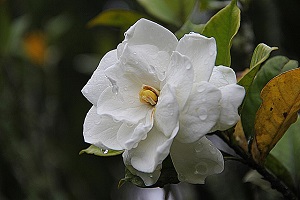For most people, if they have heard about the osmanthus plant, it’s probably because of the delightful tea blends that they can brew.
You would absolutely love it too with one sip.
Also called sweet olive or tea olive, the osmanthus fragrans flower has the mandarin name gui hua (桂花) and is one of the reputed 10 traditional flowers of China.
It’s unique appearance and refreshing taste has garnered a huge following over decades of cultivation and consumption.
So much so that the city of gui lin (桂林) was named after the plant because of the sheer amount of osmanthus trees that are planted in that geographic area.
On top of that, there are minor festivals that are specifically held to celebrate the osmanthus plant.
It’s flowers can come in a variety of colors… so does the leaves! Making them a popular choice as ornamental plants for homeowners to create beautiful gardens.
Osmanthus in Chinese culture
People outside of China would not be able to comprehend how positively viewed the osmanthus flower is in the country.
There is even a strong domestic market for the cultivation for osmanthus trees for landscaping.
This is because the osmanthus tree is seen as a symbol of nobility.
In ancient China, only those with status and wealth would have the means to grow them in their gardens and property.
Because it’s mandarin name shares the same character 桂 with the cassia tree, they are both commonly used interchangeably in terms of symbolism.
Osmanthus blossoms during the 8th lunar month, about October in the western calendar, which is why this particular month is sometimes referred to as the osmanthus month (桂月).
In feng shui, the osmanthus flower is most often depicted with other plants in paintings.
With peach blossoms, it denotes longevity with nobility.
With plum blossoms, it represents an honorable long life.
With the gourd and pomegranate, it symbolizes a wish for the birth of many children over the years.
Paired with orchids, it represents nobility in descendants.
Children holding sweet olive signifies passing the examinations. Implying a role in public office. For this reason it is often placed in study rooms for the kids o garner more scholastic luck.
It is also a very suitable plant for display in common areas and work areas such as a living room or meeting room.















